An indoor greenhouse can transform even the smallest apartment into a thriving garden—and I learned that firsthand. I still remember bringing home my first one: a modest, clear plastic enclosure, no bigger than a nightstand. That small decision sprouted into a full-blown passion for sustainable indoor gardening, transforming my apartment into a lush, green sanctuary.
And I’m not alone. Indoor gardening is booming—driven by rising urbanization, wellness trends, and a growing need to connect with nature indoors. The global indoor gardening market is projected to grow at a CAGR of 5.9% by 2027, highlighting a strong shift toward eco-conscious, self-sufficient lifestyles.
Indoor greenhouses are at the heart of this movement. They offer controlled environment agriculture right in your living room—no backyard needed. Whether you’re looking to grow herbs, leafy greens, or just create a mini-jungle oasis, there’s a greenhouse kit for every space and skill level.
Let’s explore the best indoor greenhouse brands leading this green revolution—focusing on those that support ethical manufacturing, sustainable living, and year-round home growing.
Benefits of An Indoor Greenhouse
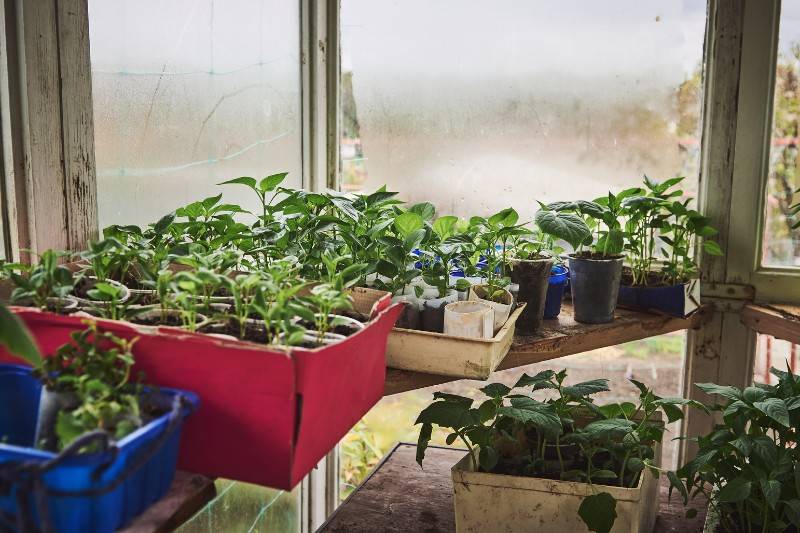
When I first ventured into the world of indoor greenhouses, I was seeking more than just a hobby; I was planting the seeds for a sustainable lifestyle. Little did I know, this small step would grow into a canopy of benefits, each enhancing my life in its own unique way.
From bolstering my diet with fresh produce to transforming my living space into a verdant retreat, the advantages are as varied as the plants I nurture. Here, I’ll share the top seven benefits that have truly made my indoor greenhouse a sustainable oasis, a testament to the harmony between nature and nurture.
1. Year-Round Gardening Regardless of Weather
One of the most compelling draws of an indoor greenhouse is the liberation from the whims of weather. No longer am I a bystander to the frost of winter or the scorch of summer—my plants thrive in a perpetual spring.
This is the heart of controlled environment agriculture: the ability to create a microclimate that defies the seasons outside. With a stable temperature, consistent light, and protection from extreme weather, my leafy charges experience optimal growing conditions all year round.
This season extension means I can sow and harvest at my leisure, making fresh basil or strawberries in December more than a mere wishful thought. It’s a sustainable gardening practice that not only ensures a constant supply of fresh produce but also significantly extends the variety of plants that can be grown, irrespective of the outdoor climate.
Indoor greenhouses truly epitomize year-round gardening, offering a steadfast oasis in the midst of ever-changing weather patterns.
2. Optimized Plant Health with Controlled Environment
In my green sanctuary, every day is a good day for my plants. The controlled environment of an indoor greenhouse is the cornerstone of optimized plant health.
By regulating temperature and humidity with precision, I create a utopia for my green friends. This meticulous climate control wards off the usual suspects of plant distress—extreme temperatures and improper moisture levels.
Moreover, the enclosed space is a fortress against pests and diseases, which often wreak havoc in traditional outdoor gardens.
It’s not just about prevention; this environment promotes vigorous growth and bloom. The plants are not just surviving; they’re thriving, displaying vibrant colors and robust vitality. It’s a clear testament to the power of creating the perfect conditions, and the result is not just pleasing to the eye but a boon for indoor gardening efficiency and eco-friendly living.
3. Space Efficiency: Maximizing Urban Living
The ingenuity of an indoor greenhouse lies in its ability to make the most of limited space. In my own experience, the transformation of a tiny corner of my apartment into a lush, productive garden was nothing short of magical.
These compact havens of greenery are designed to fit into the nooks and crannies of city dwellings, turning underused areas into vibrant spots of life. Vertical gardening, stackable shelves, and hanging planters are just a few space-saving gardening techniques that maximize the vertical real estate often overlooked in smaller living spaces.
This efficient use of space not only brings the joy of gardening into the urban home but also contributes to urban sustainability, turning concrete jungles into greener, more breathable spaces.
Indoor greenhouses are not just about growing plants; they’re about growing possibilities, even in the most confined urban environments.
4. Therapeutic Gardening: A Mental Health Boost
The serenity of tending to my indoor garden has become a cornerstone of my mental well-being. It’s not just anecdotal; the mental health benefits of indoor gardening are well-documented.
A study published in the Journal of Health Psychology found that gardening can lower cortisol levels, a biological marker of stress. This aligns with my experience—immersing myself in the tranquil tasks of pruning and watering is a form of meditative practice, a respite from the digital overload of modern life.
The green of the leaves and the soil between my fingers ground me in the present moment, offering a therapeutic horticulture session within the walls of my home. It’s a form of ecotherapy, where every interaction with my plants nurtures not just their growth, but mine as well, providing a natural antidote to the stresses of daily life.
5. Educational Value: A Learning Tool for All Ages
My indoor greenhouse has become more than a garden; it’s a classroom without walls. The lessons it imparts range from the science of photosynthesis to the patience required in watching a seedling take root.
A neighbor’s family shared how their indoor greenhouse has become a pivotal educational tool for their children. Their son, once indifferent to biology, now eagerly measures the growth of his tomatoes, learning firsthand about plant biology and the responsibility of care.
Similarly, a local school incorporated an indoor greenhouse into their curriculum, and teachers reported a noticeable increase in student engagement and understanding of environmental science. This hands-on approach to learning demystifies complex concepts, making them tangible and interactive.
For adults, the learning never stops, as managing an indoor greenhouse involves a continuous cycle of research, experimentation, and adaptation, fostering a lifetime of learning and growth.
6. Freshness and Nutrition at Your Fingertips
The journey of produce from my indoor greenhouse to my plate is measured in footsteps, not food miles, ensuring I’m getting the freshest and most nutritious bounty possible.
There’s a stark difference in the taste and nutritional value of a tomato, for instance, that’s been ripened on the vine under my watchful eye compared to one that’s traveled thousands of miles to reach my kitchen.
Home-grown produce doesn’t just surpass in flavor; it’s also richer in vitamins and minerals. A study from the Journal of Agricultural and Food Chemistry suggests that vegetables and fruits lose nutrients during transportation and storage. By harvesting directly from my indoor oasis, I’m capturing the full spectrum of nutrition that plants offer at their peak.
This immediate harvest-to-consumption process not only elevates the quality of my meals but also fortifies my diet with home-grown nutrition, contributing to a healthier lifestyle with every bite.
7. Eco-Friendly Living: Reducing Your Carbon Footprint
Adopting an indoor greenhouse has been a transformative step in aligning my lifestyle with eco-friendly practices. By cultivating plants at home, I’ve significantly reduced the carbon footprint associated with transporting food from farm to table.
But the sustainability benefits don’t stop there. My indoor garden utilizes upcycled containers and composts organic waste, turning kitchen scraps into nutrient-rich soil.
I conserve water through drip irrigation—a stark contrast to the often wasteful water use in large-scale agriculture.
Additionally, by choosing non-toxic pest control methods and natural fertilizers, I’m reducing the chemical load on the environment, supporting a healthier ecosystem within and beyond my home.
These practices not only foster a sustainable living space but also instill a sense of environmental stewardship, as each plant grown is a step towards a greener, more sustainable future.
Where To Place Your Indoor Greenhouse
You should place your greenhouse where your plants could get plenty of sunlight, like next to a south-facing window or a patio door.
You can also add lighting from a grow light to your greenhouse instead, but keep in mind that sunlight is always best for plants. If you can, at least make a combination of the two, so your plants don’t grow on artificial lighting alone.
The ideal spot also needs to be humid and warm.
You also have to consider the size. Once you know what plants you want to grow, you’ll know the size you need, and eventually where to put your greenhouse.
Best Plants For An Indoor Greenhouse
Indoor greenhouses really let you broaden the variety of plants you can grow inside. If you plan ahead and prepare the right conditions, only the ceiling’s the limit.
Herbs for Your Indoor Greenhouse
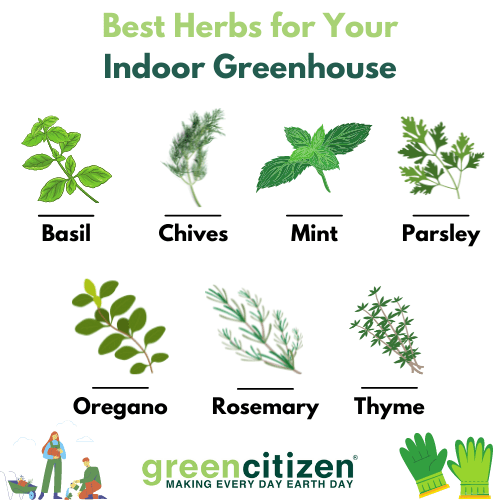
Herbs are definitely the most popular variety for growing inside. They don’t need much care and don’t take long to grow.
If you’re just starting to grow indoors consider getting a few shots of:
- Basil
- Chives
- Mint
- Oregano
- Parsley
- Rosemary
- Thyme
Vegetables for Your Indoor Greenhouse

Your indoor garden can also save you money at the grocery store. A minute ago they were in the garden, and now they’re on your chopping board. Vegetables to consider include:
- Avocado
- Carrots
- Cucumbers
- Hot peppers
- Lettuce
- Radishes
- Spinach
- Tomatoes
Best Fruits for Your Indoor Greenhouse
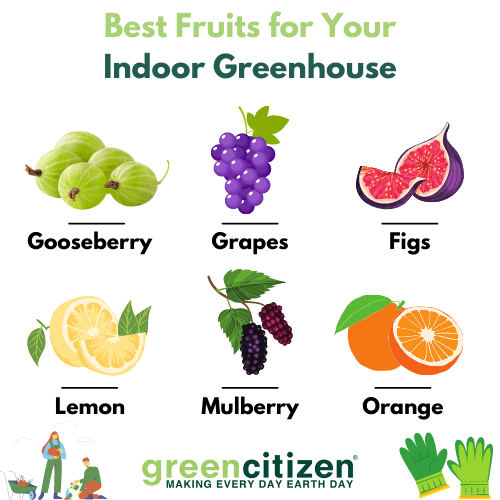
You will have the best chances with fruit plants that don’t take up much space such as strawberries, and other shrubs from the berry family.
These can easily give you a healthy snack all year long:
- Gooseberries
- Grapes
- Figs
- Lemons & limes
- Mulberries
- Oranges
Determining The Size Of Your Greenhouse
The size of your indoor greenhouse depends on several factors, like the available space you have, its location, and the kind of plants you want to grow.
If it’s just a few herbs and a couple of cherry tomato stalks, a mini greenhouse made with 5” x 5” grow trays would be enough.
On the other hand, if you want leafy greens, large flowering plants, or even small trees like avocados, you’ll need to take their size into account and do more planning.
If you’re short on space, you can even go vertical, with a five-foot-tall, tiered greenhouse.
How To Build A DIY Indoor Greenhouse
Before you jump onto building your a DIY greenhouse, you should plan ahead so that things don’t messed up later on.
- Decide what and how many plants you want to grow, as this will help you determine the size of your indoor greenhouse.
- Next, find a sunny spot in your home where the greenhouse won’t stan in people’s way. Then, find the supplies for the frame and covering and start building it.
- Lastly, add the pots or trays, and fill them with growing medium, and you’re ready for planting.
Most plants grow best when nighttime temperatures are 10 to 15 degrees lower than daytime temperatures, so make sure to lower the temperature at night with a small fan.
It’s always better to plant seeds than cuttings as this way you won’t bring any insects into your home. Use the first few weeks to install optional supplies and adjust the conditions inside the greenhouse.
Step 1: Select The Building Materials
The very first step is to select the frame and glazing materials. There are a few options available in the market right now. Each of them comes with different sets of pros and cons.
First, let’s check out the options:
Frame Material Options
For the frame, you need something sturdy to support the weight of the whole structure.
- Wood — A great option for indoor greenhouses because it can look great in your home. You can cut it and shape it relatively easily and make the frame you want. This “warm” material is also a great insulator. However, keep in mind to use treated wood, as too much humidity can make it rot.
- PVC Pipes — Another material that make building a DIY greenhouse indoors a breeze. With plastic, you don’t have to worry about humidity and warping. Still, PVC pipes aren’t as sturdy as steel, so if you plan for a tiered house, you may want to use something stronger.
- Galvanized Steel — Strong and won’t break the bank. Galvanized means coated with zinc, so you don’t need to paint or treat it against rust. Steel, however, isn’t as easy to cut as wood or PVC pipes. Also, keep in mind that it’s much heavier than the other two options.
Glazing/Covering Material Options
When you’ve chosen the frame, you need to find the covering which will allow for plenty of sunlight to get through.
- Glass — A go-to material for indoor greenhouses covers. It definitely has a lot of perks — it’s easy to maintain, doesn’t wear out easily, gives a nice appearance, and lets plenty of light to pass through. On the other hand, glass can be expensive, and hard to install if you do it yourself. Finally, if you have playful kids or “hyperactive” pets, you’re probably reading the other options now.
- Fiberglass — Has all the benefits of glass plus it’s durable. It’s lightweight so you can install it much easier and allows a lot of light inside. However, it can turn yellow after about ten years unless you give it a new coat of UV protection resin.
- Film Plastic — Often used to make indoor greenhouses. There are many types of plastics, and the amount of light they let through depends on the type you choose. This is by far the cheapest option but needs much more maintenance and replacement, as it damages more easily.
Step 2: Create The Ideal Environment For Plant Growth
Sunlight and/or Grow Lights
Sunlight is essential for growing plants, so you should place the greenhouse somewhere it gets the most sunlight throughout the day. Grow lights can help, but can’t replace natural light.
Grow lights are great for winter gardening but keep in mind that they can add up a lot of heat. Make sure you use them with a timer so you don’t pop the corn while still on the stalk.
What Temperature Is Ideal for Your Plants?
Growing plants generally need a temperature range between 65-75°F (18-23°C). Your home probably falls into this scope, but it’s good to have an easy option to control the cooling or heating in indoor greenhouses.
To make it warmer indoors, you can use tea lights or a small electrical heater. Most plants grow best when nighttime temperatures are 10 to 15 degrees lower than daytime temperatures, so make sure to lower the temperature at night with a small fan, which can also make for air circulation.
Humidity is Important
It’s hard to escape the change of seasons, and even inside your home, plants “feel” that something’s happening outside. To prevent them from losing leaves or turning brown due to low humidity, you should get a humidifier. If not, just make sure to mist the plants at least once a day.
Water and Nutrients
For your plants to flourish, the soil should best be moist but not soggy. As your indoor greenhouse will probably be within your reach, it’ll be easier for you to check the moisture. Unlike outdoors, the amount of nutrients your plants can draw is limited indoor, so you’ll need to make a bit of compost or add organic fertilizer all year round.
Step 3: Get The Supplies And Start Building
The frame and covering apart, you’ll need a few supplies to get your indoor greenhouse up and running. Once you’ve chosen pots or trays, decided on the type of soil and fertilizer, you need to get:
1. Grow Lights
These can be of great help in winter months when there’s little sun, especially inside. They also help if you plant flowers that like high-intensity light. I remind you, grow lights are must for winter greenhouses too.
2. Fans
Use them to lower the greenhouse temperature and improve air circulation. The one that I use in my own indoor greenhouse is this Schaefer Versa-Kool 12″ Deep Guard Greenhouse Circulation Fan.
3. Heater
If the temperature, on the other hand, drops too low, a small electric heater like the Bio Green Greenhouse Heater is more than welcome.
4. Hygrometer
If you can see that the humidity level is low, then it’s probably too late for your plants. You should avoid this by adding a small stick-on hygrometer like this Govee Hygrometer + Thermometer.
5. Thermometer
Without a reliable thermometer you’ll be pressed hard to guess the exact temperature inside your greenhouse.
You can use the Govee Hygrometer as well because, fortunately, it’s also a thermometer. This means that you can save more since you don’t have to buy a separate thermometer anymore.
6. Watering System
Can make your daily maintenance really easy. An automated watering and misting system like the MIXC Mist Irrigation Kit and Plant Watering System is really useful when you go away for a week or two.
How Much Does It Cost To Build An Indoor Greenhouse?
So, are all the homegrown vegetables and herbs worth the cost of the entire home gardening thing?
Yes, without question.
Keep in mind that a lot of these supplies are optional, and it’s you who decides how much your greenhouse is going to cost. A mini greenhouse for annuals and herbs can be made for less than $10, and there are 4-tiered indoor greenhouses that are sold for as little as $30.
If you don’t have the time or materials to build your own indoors greenhouse, you can easily pick one up from the store.
5 Indoor Greenhouse Brands That Are Driven by Sustainability
1. Home-Complete: Simple Solutions for Sustainable Indoor Growing
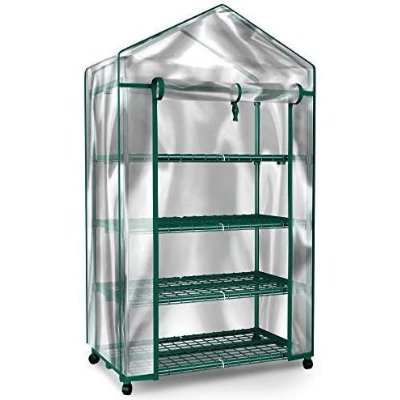
Home-Complete doesn’t rely on flashy tech or hype. Instead, it focuses on doing the basics right—creating affordable, sturdy indoor greenhouse solutions that support self-sufficient living. For eco-conscious gardeners just starting out, Home-Complete offers a gentle on-ramp to sustainable growing.
The brand’s philosophy revolves around accessibility. Their greenhouses use rust-resistant steel frames and clear PVC covers that stand the test of time, reducing the need for frequent replacements and curbing unnecessary waste. While they don’t market themselves as overtly green, Home-Complete promotes one of the most sustainable habits around: growing your own food indoors.
Their modular setups encourage year-round use, enabling people in small spaces to reduce reliance on store-bought produce. It’s a back-to-basics approach that aligns with a lower-carbon, low-waste lifestyle—no frills, just function and longevity.
2. Outsunny: Democratizing Green Living for Every Household

Outsunny brings greenhouse gardening to the masses—combining affordability, durability, and thoughtful design. As a brand under Aosom, Outsunny offers accessible indoor greenhouse options for people looking to grow their own food and plants sustainably at home.
The brand’s real value lies in scale. By producing low-cost yet long-lasting greenhouses, Outsunny lowers the barrier to entry for sustainable living. Their products use powder-coated steel frames and reinforced PE covers built to endure indoor humidity and temperature shifts—delivering long-term use without regular replacements.
While Outsunny isn’t a sustainability-first brand, its contribution to eco-friendly lifestyles is real. It supports a circular gardening habit—grow what you need, reuse what you can, waste less overall. For households wanting to make that first leap into greener living, Outsunny makes it attainable.
3. EAGLE PEAK: Engineering Durability into Everyday Gardening
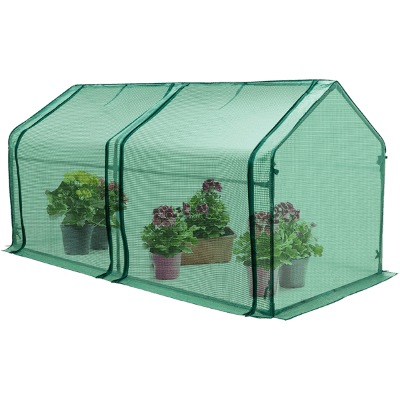
EAGLE PEAK takes a precision-first approach to sustainability. Their pop-up indoor greenhouses are designed with quick assembly, reusability, and space-efficiency in mind—ideal for apartment dwellers or small-space gardeners aiming to grow smarter, not harder.
Though not a self-declared eco-brand, EAGLE PEAK’s designs promote low-waste habits. Their high-quality steel frames and tear-resistant covers are built for season-after-season use, reducing the cycle of cheap, short-lived gardening gear that ends up in landfills.
What sets them apart is their user-first philosophy: portability, ease of use, and multipurpose functionality. These traits all lead to less consumption and more sustainable ownership. EAGLE PEAK empowers users to create low-impact indoor gardens that fit into almost any lifestyle—making greener living more feasible for everyone.
4. Quictent: Greenhouse Gardening with an Eco-Conscious Backbone
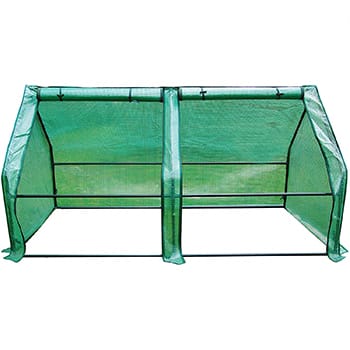
Quictent is quietly one of the most sustainability-forward brands in the indoor gardening space. Their indoor greenhouses are designed with both performance and planet in mind—from recyclable PE covers to robust, galvanized steel frames built to last.
What really sets Quictent apart is their product lifecycle thinking. Many of their greenhouse kits come with lifetime support and replacement parts—encouraging users to fix rather than toss. This approach supports a circular economy mindset and keeps materials out of landfills.
Even better, Quictent’s systems are optimized for growing your own herbs, veggies, or seedlings at home, cutting down on packaging waste, transportation emissions, and reliance on industrial agriculture. For sustainability-focused consumers, Quictent offers an indoor greenhouse you can feel good about—one that reflects both environmental and ethical awareness.
5. MACROUT: Small-Space Gardening with Long-Term Impact

MACROUT may be new to the game, but it’s quickly earning a reputation for design-forward indoor greenhouses that work with your space—and your values. Built for modern lifestyles, MACROUT’s compact units are as functional as they are minimal.
Though not marketed as a sustainability brand, MACROUT’s product design encourages eco-friendly behaviors. Their greenhouses use corrosion-resistant metal and reusable shelving to minimize waste over time. With a focus on simplicity and adaptability, each unit is made to last across multiple seasons and plant cycles.
What makes MACROUT relevant for green living is how it supports consistent growing, even in tight urban quarters. It empowers renters and space-limited households to join the sustainable gardening movement—without needing a backyard or big budget. Quietly effective, subtly sustainable—that’s MACROUT’s charm.
Conclusion
Embracing an indoor greenhouse has been more than a hobby—it’s been a journey toward sustainability, self-reliance, and mindful living. These compact systems don’t just green our homes—they reduce food miles, minimize waste, and help us reconnect with nature in everyday spaces.
Whether you’re growing herbs on a windowsill or managing a full indoor food garden, the impact goes far beyond your four walls. Indoor greenhouses support mental well-being, promote local food production, and inspire a low-waste lifestyle—even in urban apartments.
So if you’ve ever dreamed of growing your own food indoors, now’s the time. Choose a brand that aligns with your values, start small, and let your indoor garden thrive—one sustainable harvest at a time.


